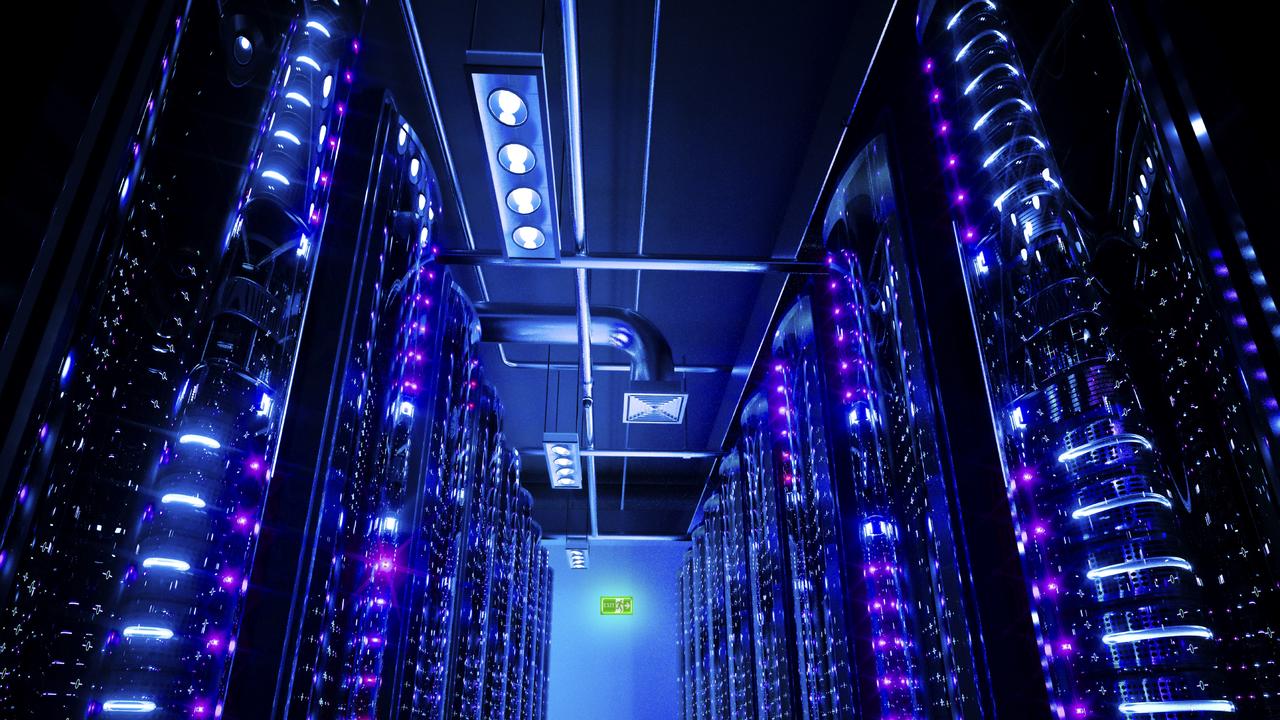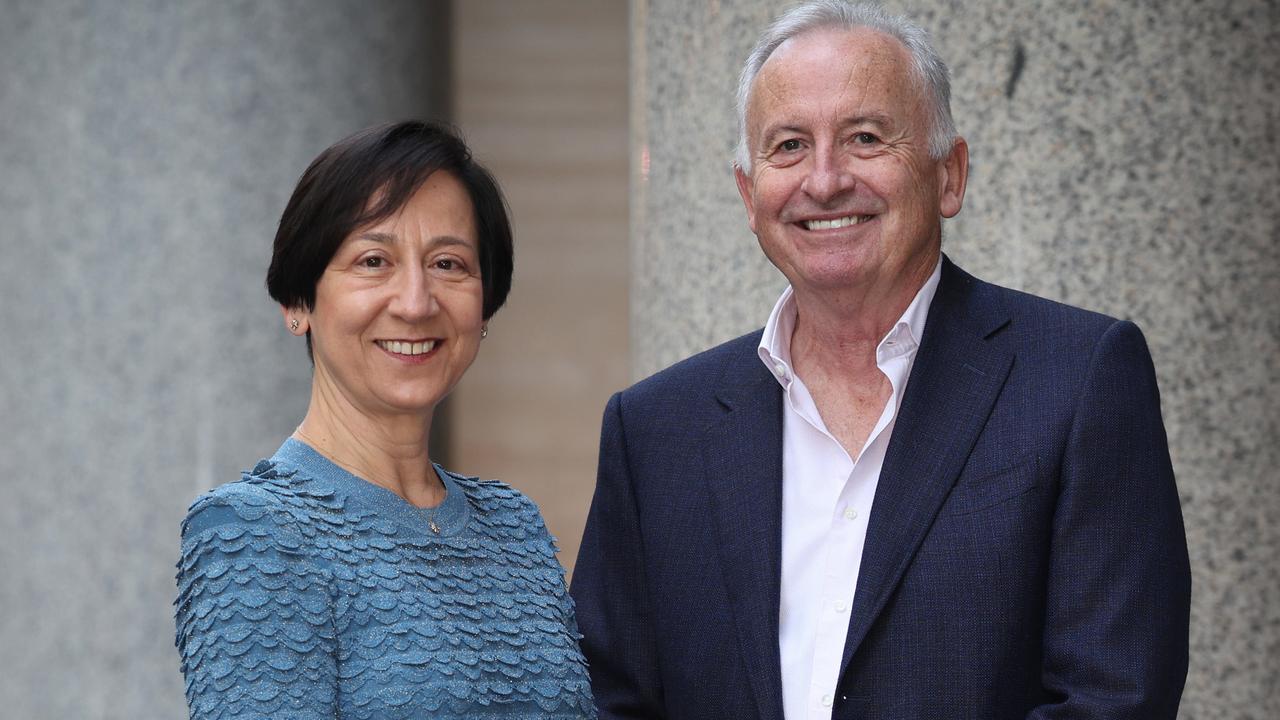AI isn’t the only the star of Samsung’s big screen TV
Artificial intelligence has been the main drawcard to entice customers to upgrade their devices and appliances but with Samsung’s new flagship TV the main attraction is what’s on its surface.
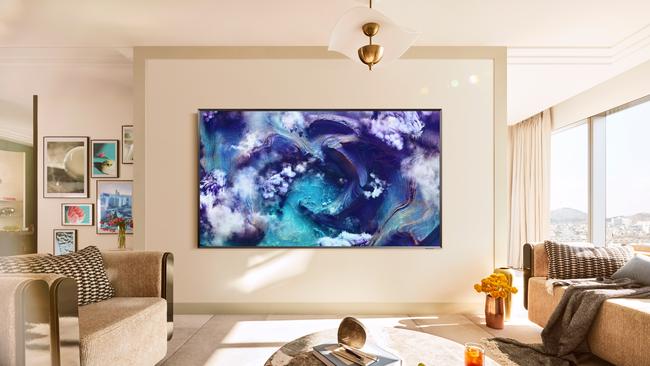
Business
Don't miss out on the headlines from Business. Followed categories will be added to My News.
Artificial intelligence has been the main drawcard that consumer electronics giants have used to entice customers to upgrade anything from smartphones to fridges and televisions.
And while Samsung has been one of the biggest adopters of the much hyped technology, AI isn’t the main attraction of its latest 85-inch Neo QLED TV, which retails for $13,799.
While it has increased the AI processing power by 50 per cent of last year’s model - a noticeable difference, which we’ll get to later - the main reason to upgrade is its new screen.
As TVs have become bigger and bigger, they have become brighter and brighter, which Australians appreciate in their sun-drenched landrooms. After all, who wants to watch TV and see a reflection of themselves, sitting on the couch?
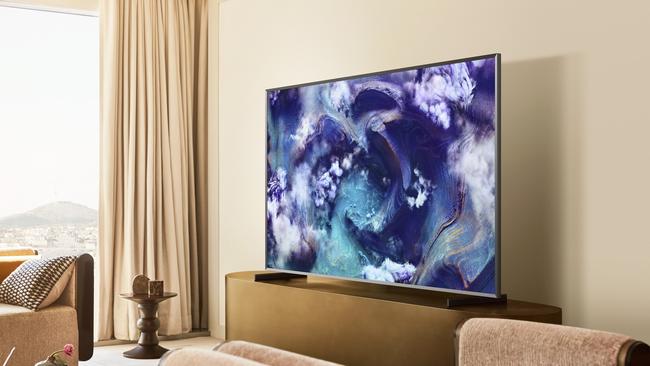
‘Glare-free’ screen
The problem is, even the brightest TVs still can’t compete with sunlight. On a sunny day, it might get to 70,000 nits of brightness - about seven-times more than a car’s headlights on high beam - whereas the best TVs push around 4000 nits.
Samsung has overcome this problem with a screen that’s embossed with a special coating that diffuses light in multiple directions, creating hardly any glare.
And while it has a matte-like finish, which typically doesn’t have the striking appearance of a glossy screen, it has managed to maintain vivid colours and deep contrasts that give images more three-dimensionality. This is achieved via quantum dots that are ultra-fine semiconductor particles that provide higher levels of colour accuracy and brightness - perfect for Australian living rooms.
When watching movies, even ones with plenty of blacks like the old Star Wars films, it creates an immersive experience, and this is where AI also helps.
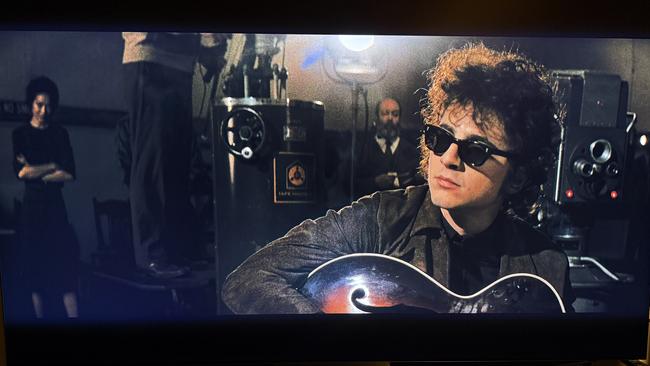
AI boost
Samsung’s 85-inch Neo QLED 8K QN990F now has 768 neural networks versus 512 in last year’s model. This is because it needs the firepower to support Samsung’s seven years worth of operating system updates for its TVs but also allows for some tangible differences from 2024.
The biggest change is in upscaling content to 8K.
Typical upscaling has involved improving the sharpness, contrast and colour saturation of an image. But generative AI upscaling adds more detail to the picture that wasn’t there previously by creating extra pixels to lift content to 8K resolution.
This can sometimes be a little hit and miss on live broadcasts as the TV works out what it needs to do on the fly, but for the most part it works very well - creating greater clarity on shows that were filmed in the ‘80s and ‘90s. Classic episodes of the Simpsons have never looked better.
Classic Studio Ghibli movies also are brighter and more defined. Action movies, like the Mission Impossible series have more fluid, sharp motion.

But this extra detail can have its drawbacks. Films shot on film can appear a bit more grainy, which can appear distracting in the digital era. However, it’s subjective.
For example, James Mangold’s Bob Dylan biopic A Complete Unknown was filmed digitally then transferred to film stock to achieve a more vintage look before being converted back to digital. Needless to say, on the QN990F the metallic silver particles that are hallmarks of film ripple across the screen.
More personalisation
But for those who are purists, Samsung allows films and TVs shows to be viewed in filmmaker mode. It also allows those who embrace AI to have more control of an image, allowing to choose their preferences for different types of content like movies and sports, and then remember their choices without a user having to manually switch back.
If you’re watching sports, the TV will automatically configure your settings. The same with movies. Where the AI kicks in is when sports and drama are intertwined like in Ted Lasso, the TV can switch between both. This is called AI customisation.
For those who don’t want to get too bogged down, they can let the TV do the work with the AI Optimisation picture mode. Samsung has also simplified its settings menu to make it easier to switch and customise modes.
The AI functionality extends to sound. The speakers can automatically adjust to a rooms surroundings - boosting dialogue if a toddler is having a bit of wild rumpus.
Gamers are also looked after with up to 240 hertz refresh rates - meaning the display refreshes 240 times per second - creating smoother and more detailed motion.
Subwoofer and soundbar upgrade
Samsung has also updated its Q-series subwoofer and soundbar. The subwoofer is less than half the size of the previous model, but still creates deep, clear bass. It achieves this by having two eight-inch dual active drivers, rather than just one large one, increasing the power output by about 50 per cent (200 to 300 watts).
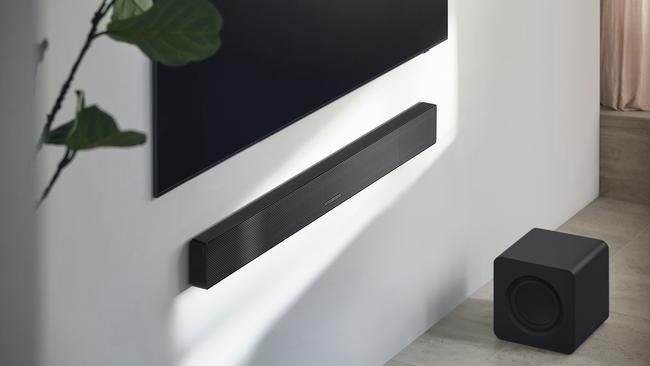
This means more power and a heavier pace as the drivers work in tandem but opposite each other to cancel out all those vibrations to reduce distortion.
The HW-QS700F convertible soundbar is designed to placed on a cabinet top or be rotated 90 degrees for wall mounting, so it fits almost flush with the TV. The speakers are designed to function as both front and up firing channels, which are adjusted automatically depending on the soundbar’s placement.
The smaller soundbar and a more streamlined soundbar create less clutter, perfect for minimalist homes, particularly when you pair it with Samsung’s wireless box that can connect devices like Xbox consoles in more discrete locations like inside cabinets.
Bottom line
This is the best TV that Samsung makes today and creates an immersive experience that can turn your living room into a cinema. It should do well.
Originally published as AI isn’t the only the star of Samsung’s big screen TV


